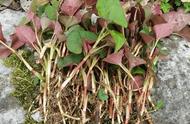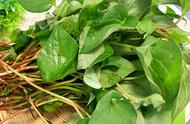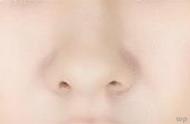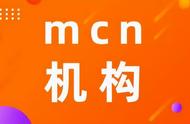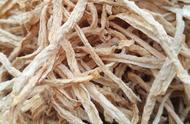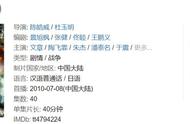为啥子要啰嗦这一句,因为我们在查资料的过程中就发现,有人又捞起半截就开跑,晓得马兜铃内酰胺Ⅰ、马兜铃内酰胺Ⅱ有毒就又激动了,鼓捣说人家折耳根里面的衍生物就是它们,于是折耳根也就有毒了,折耳根才遇得到哦!
此外,它们之间不仅是名字有差别,通过结构式对比也发现,这两种折耳根中存在的化合物与有毒的马兜铃内酰胺Ⅰ、马兜铃内酰胺Ⅱ也不同。
来,跟到我再念一遍,马兜铃内酰胺AⅠ不是马兜铃内酰胺Ⅰ,马兜铃内酰胺BⅡ不是马兜铃内酰胺Ⅱ,折耳根里面是马兜铃内酰胺AⅠ和马兜铃内酰胺BⅡ,没有马兜铃内酰胺Ⅰ和马兜铃内酰胺Ⅱ!
四

虽然折耳根里面不含马兜铃酸,也不含已被证实有毒的马兜铃内酰胺Ⅰ和马兜铃内酰胺Ⅱ,但毕竟含有马兜铃内酰胺AII、BII、F1等化合物,很多人就会担心了,名字差别都不大,那折耳根里面含的这些东西,有没有毒、伤不伤肾呢?
来看我们查到的文献结果——
第一,目前没有任何证据能够直接证明,折耳根中的马兜铃内酰胺AII、BII、F1等化合物能够导致肾损伤。
第二,虽然根据化学结构推测,折耳根中的马兜铃酸衍生物可能具有较小的肾脏毒性,但远小于马兜铃酸Ⅰ与马兜铃内酰胺Ⅰ。也就是说,折耳根含有的几种马兜铃内酰胺可能具有较小的毒性。
问 :“医生,咋个又是可能呢?看来你们也莫得好专nie好严谨嘛!”
答:正是因为我们严谨,在查了一抹多的文献和研究后,发现目前没有哪项研究、哪篇论文、哪个综述说折耳根里面那几种马兜铃内酰胺100%有毒,再考虑到化学结构合理分析和推测,才用的“可能”二字。
五

啰嗦了那么大一堆,终于要说大家最关心的问题了,既然都说了折耳根可能有毒,到底还能不能吃?
结论:当然可以吃!
首先,折耳根里含有各种各样的微量元素,又不是只有马兜铃衍生物,每公斤鲜折耳根中所含总马兜铃内酰胺仅为1.2~2.9 mg,含量很低。
其次,还是那句老话,抛开剂量谈毒性就是耍流氓。之前有学者做了一个粗略的计算,假设折耳根里的马兜铃内酰胺的毒性与毒力最强的马兜铃酸Ⅰ差不多,根据《中国药典》中记载的关木通、细辛等药物日服临界计量换算,要达到中毒剂量,需要一天吃2.3~60公斤的折耳根。你想哈子,折耳根又不砸称,按照最低的量来算至少吃4斤多嘛,那是好大一堆嘛,如果不搭配点豆腐、牛肉、土豆、腊肉的话,可能光看到你都饱了!更何况上面还只是假设,这些化合物没有明确的毒性,慌啥子喃?!
最后,作为一种兼具了丰富营养价值和药用价值的植物,折耳根在抗炎、抗氧化应激等方面也有一定的作用。当然最最最关键的,还是因为它的吃法太多了,火锅串串烧烤家常菜都离不得。
所以,折耳根爱好者们,请放放心心地吃折耳根哈!
一个人的内心是否真正强大,
不是看他能征服什么,
而是看他能承受什么。
一个人的胃也一样,折耳根、香菜、螺蛳粉都一样。

参考文献
1. Xian Z, Tian J, Zhang Y, et al. Study on the potential nephrotoxicity and mutagenicity of aristolochic acid IVa and its mechanism. Biomedicine & pharmacotherapy = Biomedecine & pharmacotherapie. 2021;142:112081.
2. Debelle FD, Nortier JL, De Prez EG, et al. Aristolochic acids induce chronic renal failure with interstitial fibrosis in salt-depleted rats. Journal of the American Society of Nephrology : JASN. 2002;13(2):431-436.
3. Han J, Xian Z, Zhang Y, Liu J, Liang A. Systematic Overview of Aristolochic Acids: Nephrotoxicity, Carcinogenicity, and Underlying Mechanisms. Frontiers in pharmacology. 2019;10:648.
4. Yang JD, Hainaut P, Gores GJ, Amadou A, Plymoth A, Roberts LR. A global view of hepatocellular carcinoma: trends, risk, prevention and management. Nature reviews Gastroenterology & hepatology. 2019;16(10):589-604.
5. Soria F, Shariat SF, Lerner SP, et al. Epidemiology, diagnosis, preoperative evaluation and prognostic assessment of upper-tract urothelial carcinoma (UTUC). World journal of urology. 2017;35(3):379-387.
6. Yang B, Xie Y, Guo M, Rosner MH, Yang H, Ronco C. Nephrotoxicity and Chinese Herbal Medicine. Clinical journal of the American Society of Nephrology : CJASN. 2018;13(10):1605-1611.
7. Michl J, Ingrouille MJ, Simmonds MS, Heinrich M. Naturally occurring aristolochic acid analogues and their toxicities. Natural product reports. 2014;31(5):676-693.
8. Kim SK, Ryu SY, No J, Choi SU, Kim YS. Cytotoxic alkaloids from Houttuynia cordata. Archives of pharmacal research. 2001;24(6):518-521.
9. Li J, Zhang L, Jiang Z, et al. Toxicities of aristolochic acid I and aristololactam I in cultured renal epithelial cells. Toxicology in vitro : an international journal published in association with BIBRA. 2010;24(4):1092-1097.
10. Dedı Ková A, Bárta F, Martínek V, et al. In Vivo Metabolism of Aristolochic Acid I and II in Rats Is Influenced by Their Coexposure. Chemical research in toxicology. 2020;33(11):2804-2818.
11. Schmeiser HH, Pool BL, Wiessler M. Identification and mutagenicity of metabolites of aristolochic acid formed by rat liver. Carcinogenesis. 1986;7(1):59-63.
12. Chan CK, Pan G, Chan W. Analysis of aristolochic acids in Houttuynia cordata by liquid chromatography-tandem mass spectrometry. Journal of mass spectrometry : JMS. 2020;56(4):e4652.
13. Yu X, Gao Y, Xu Y, et al. Study of the Contents of Analogues of Aristolochic Acid in Houttuynia cordata by Ultra-High Performance Liquid Chromatography Tandem Mass Spectrometry. Foods (Basel, Switzerland). 2022;11(3).
14. Balachandran P, Wei F, Lin RC, Khan IA, Pasco DS. Structure activity relationships of aristolochic acid analogues: toxicity in cultured renal epithelial cells. Kidney international. 2005;67(5):1797-1805.
15. 尹明星, 陈婧, 施春阳, 王文清, 方建国. 从马兜铃内酰胺探讨鱼腥草安全性 %J 中草药. 2021;52(19):6045-6051.
16. Shingnaisui K, Dey T, Manna P, Kalita J. Therapeutic potentials of Houttuynia cordata Thunb. against inflammation and oxidative stress: A review. Journal of ethnopharmacology. 2018;220:35-43.
本文作者
四川大学华西医院肾脏内科石运莹主任医师、四川大学华西临床医学院2019级临床八年制杨嘉庆同学


